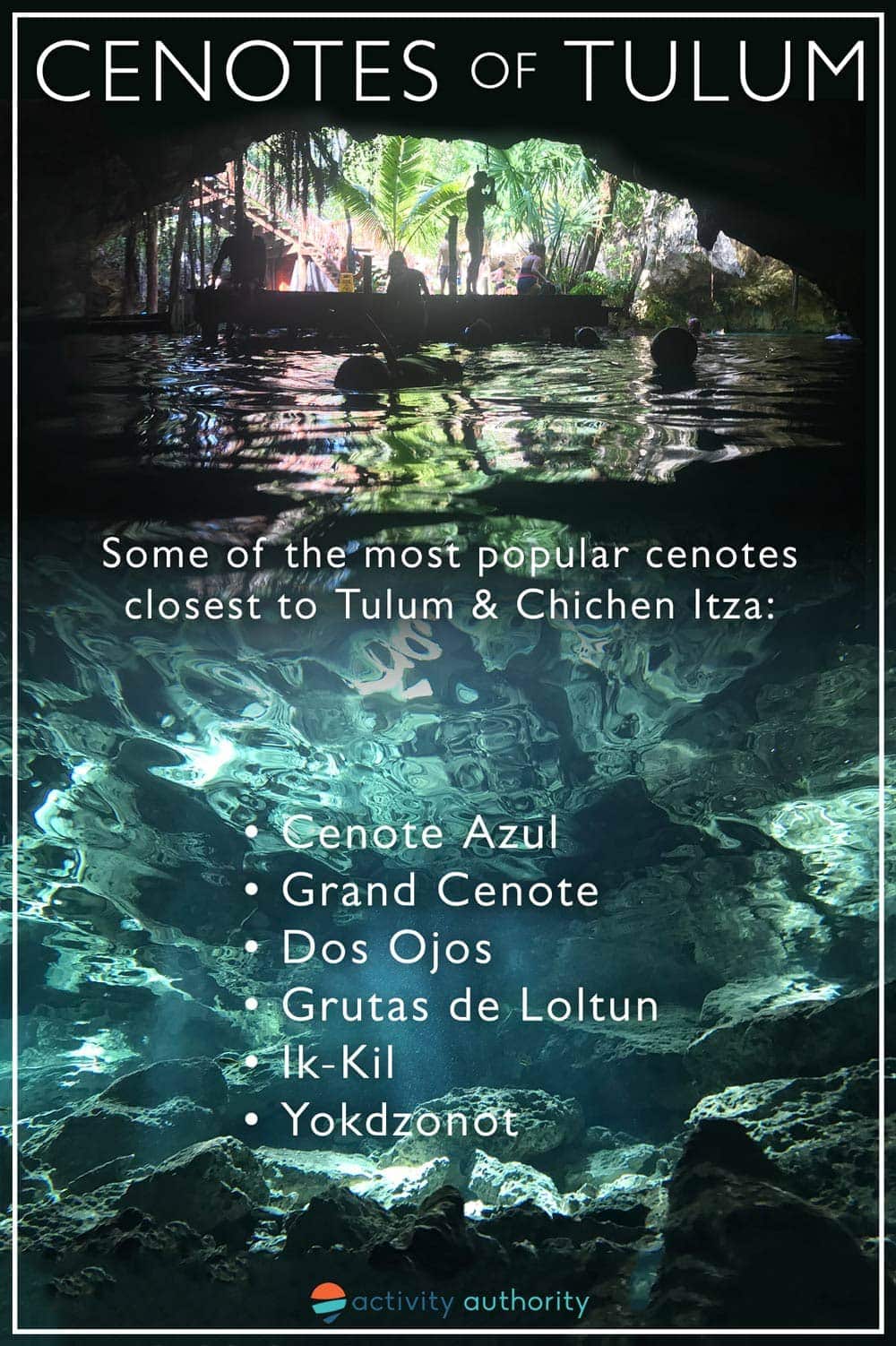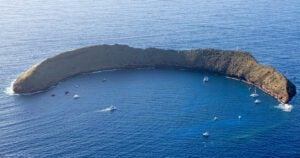Our recent trip to Cancun, Maya Riviera & Tulum
Earlier this year, we took our families to Mexico to explore, listen to some live music, and enjoy some delicious Mexican food (something we don’t have a lot of on Maui.) Our trip did not disappoint! An unexpected surprise came as we learned of the many cenotes (freshwater underground pools) dotting the Yucatan Peninsula. Below are some highlights from our Mexico trip!
We visited 6-7 different cenotes around Tulum and Maya Riviera (I wish I’d have written down all their names, but we just cruised from one to the next without much direction.) It was AMAZING! Most require a small fee per person to enter, then you climb down stairs onto man-made decks. You can then snorkel or scuba dive among stalactites (coming from the ceiling), stalagmites (coming from the floor), flying bats, swimming fish and turtles.
Some of the cenotes we visited were labrynths with multiple pools (watch the video and you’ll see scuba divers going from one cavern to the next). Other cenotes were jungle pools with diving towers and even massive lakes of bright turquoise water and great swimming.
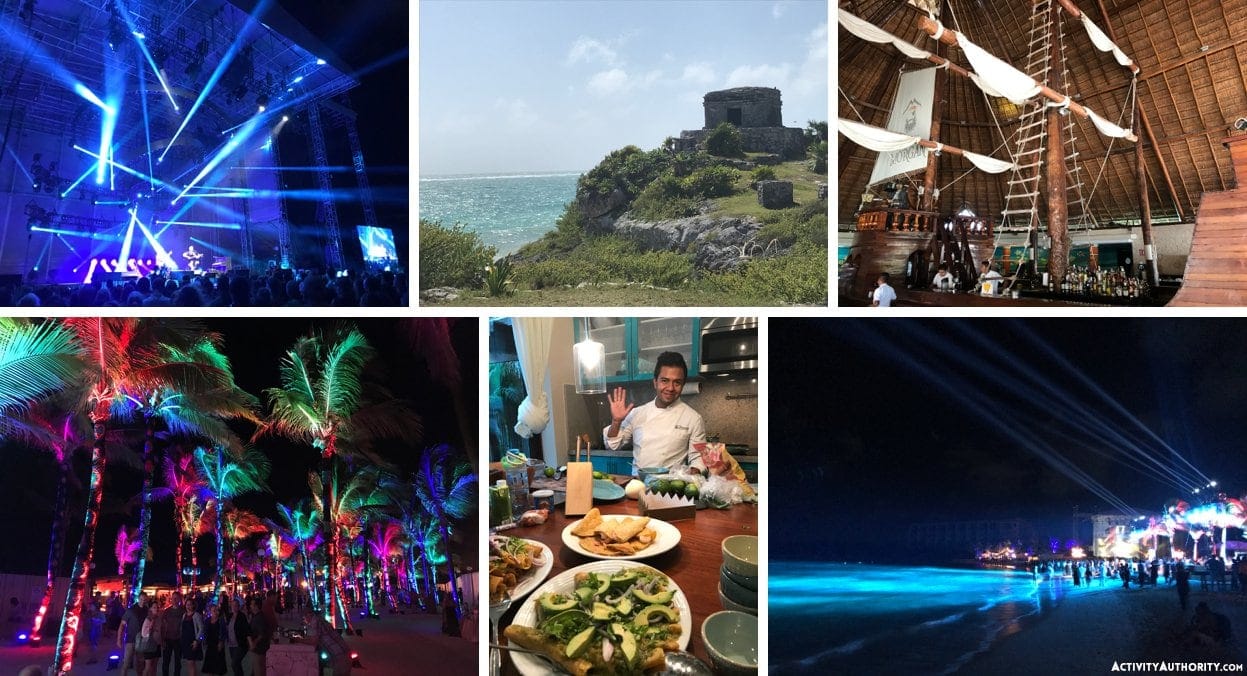
We had a blast in Cancun, Maya Riviera and in Tulum, but the real stand out from the trip was visiting all the amazing cenotes.
 Cenote Formation
Cenote Formation
While the majority of the Yucatan Peninsula – excluding Puuc Hills – is flat, the cenotes likely would not have formed without the aid of the asteroid that created a massive crater some 65,000 years ago in what is now known as the town of Chicxulub, located north of Merida. The Yucatan Peninsula itself was once all under water, as its many limestone foundations are actually coral beds and sea floor that’s been fossilized over time.
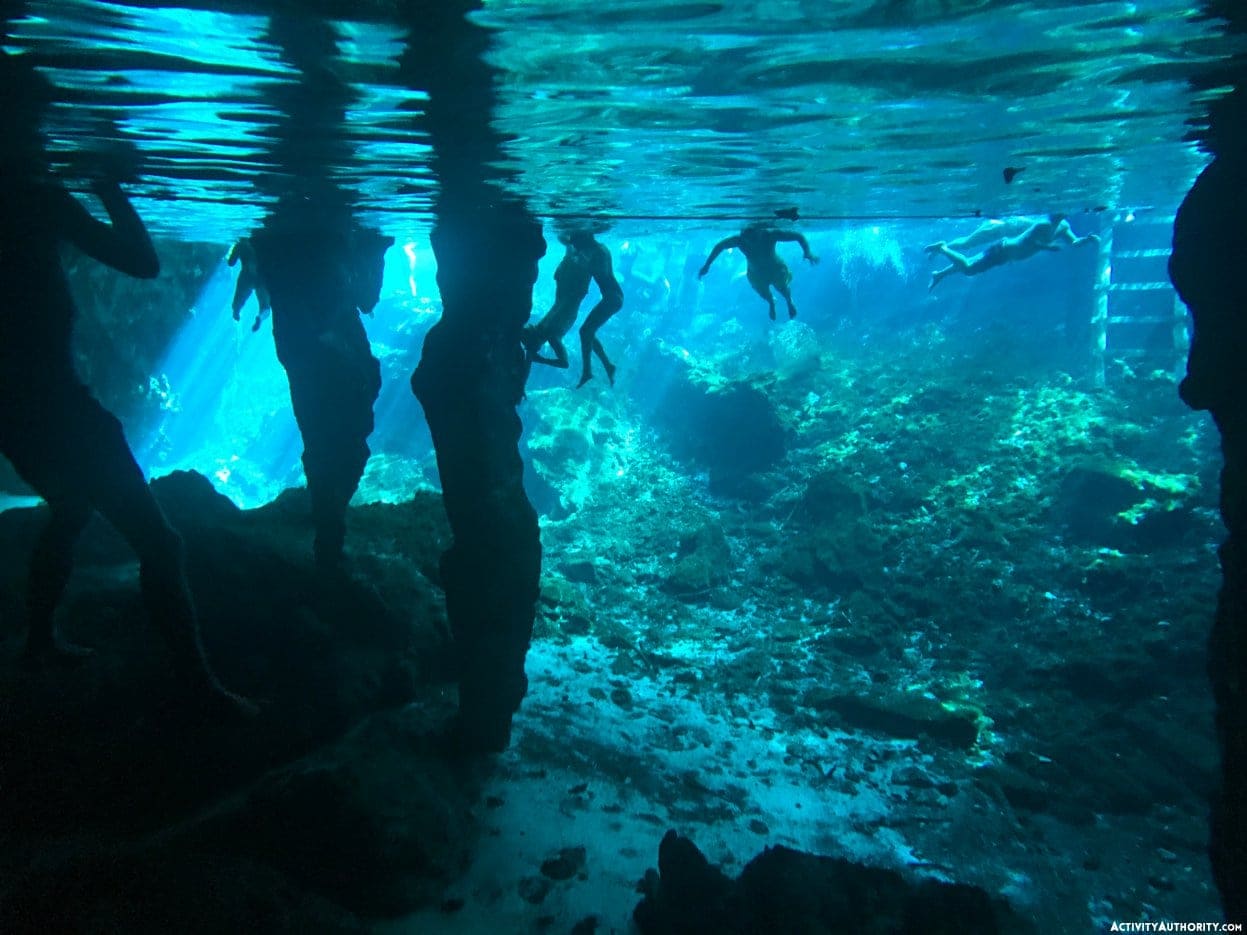
With an estimated 4,000 to 6,000 in the Yucatan peninsula alone, cenotes are defined as sinkholes or natural pits formed as the result of collapsing limestone bedrock. Over centuries, a natural pool is created from rain water as it filters through layers of perforated rock and collects underground. Eventually, it collapses to unveil a cave underneath, as well as clear water that’s been filtered through the ground.

Differentiated by their layout and structure, the three primary forms of cenotes include cave cenotes, in which the water is typically crystal clear as it is naturally protected from the sky, as well as semi open with one side dotted with stalactites and stalagmites, and open cenotes which open directly to the sky. While those along the Caribbean coast tend to open up in a more horizontal structure, others in northwest Yucatan are deeper and more vertically aligned.

Local & Historical Significance
Translating to ‘dzonot,’ meaning ‘sacred well,’ and also ‘ts’onot,’ meaning ‘hole in the earth,’ cenotes were once the primary source of freshwater for the ancient Maya civilization, who migrated to the area between 500BC and 250AD. Believed to act as portals and gateways to Xibalba, or the underworld, it was also believed that the God of Rain, Chaac, resided at the bottom of these sacred formations.
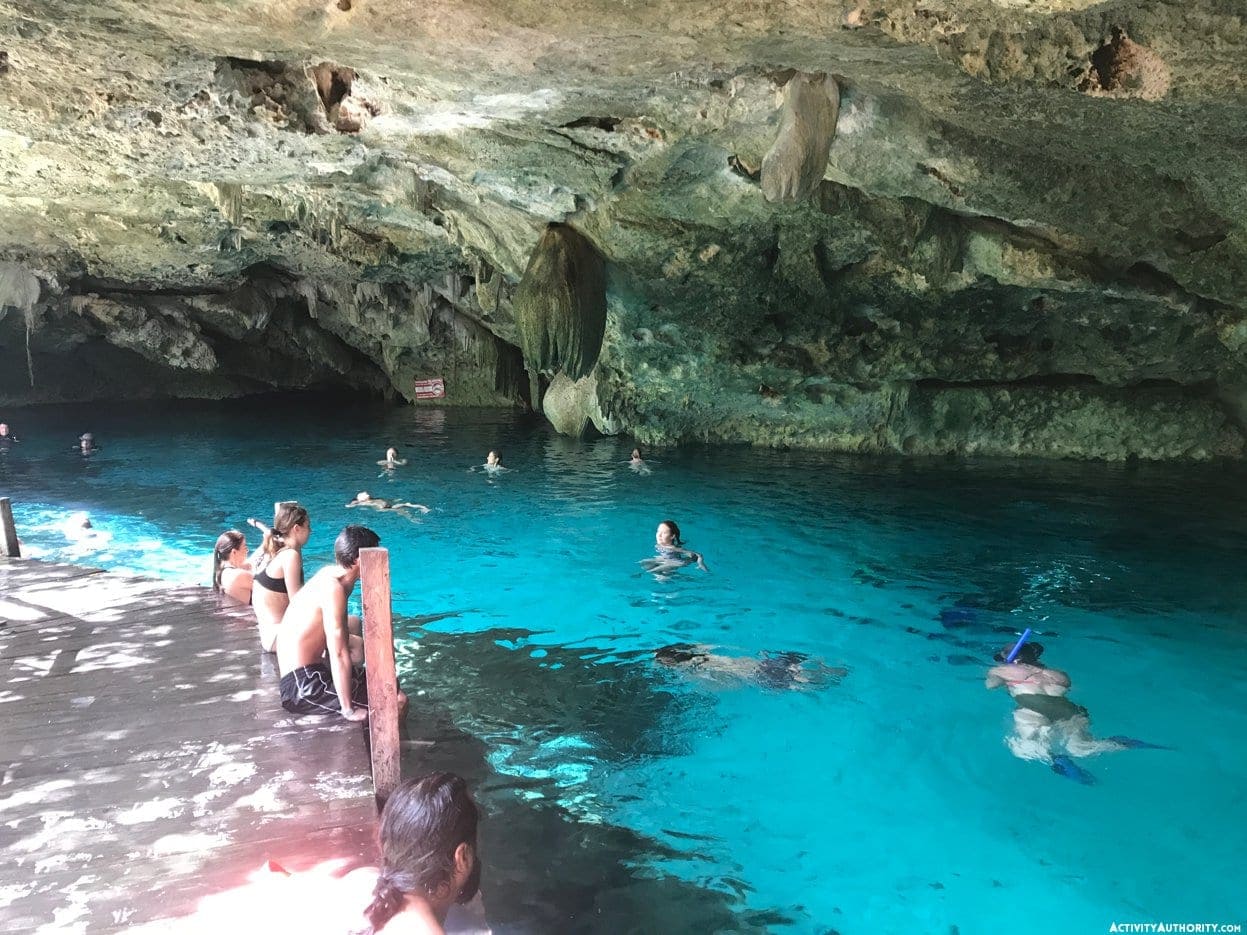
Highly revered by the Maya, cenotes were often utilized in religious ceremonies, and were used for providing certain offerings to the Gods: namely jewelry, jade, pottery and even human sacrifices, as skeletons were found much, much later in some of the most accessible of the area’s cenotes.

Though no one knows an exact number of cenotes in the Yucatan, it’s believed that less than half of them have yet to be studied and/or officially registered.
How to Visit the Cenotes: Tips & Tricks
Well known for their exceptional swimming, snorkeling and diving conditions, it’s recommended that you bring swimwear, natural sunscreen, water, a towel, slippahs and a small amount of cash with you to cover the small entrance fees, as the majority are equipped with bathroom facilities, snorkeling equipment rentals, life vests and flashlights, if needed. It’s recommended to hire a driver or take a camiones, an inexpensive local minivan. For those who plan to dive, an open water certification is typically required.
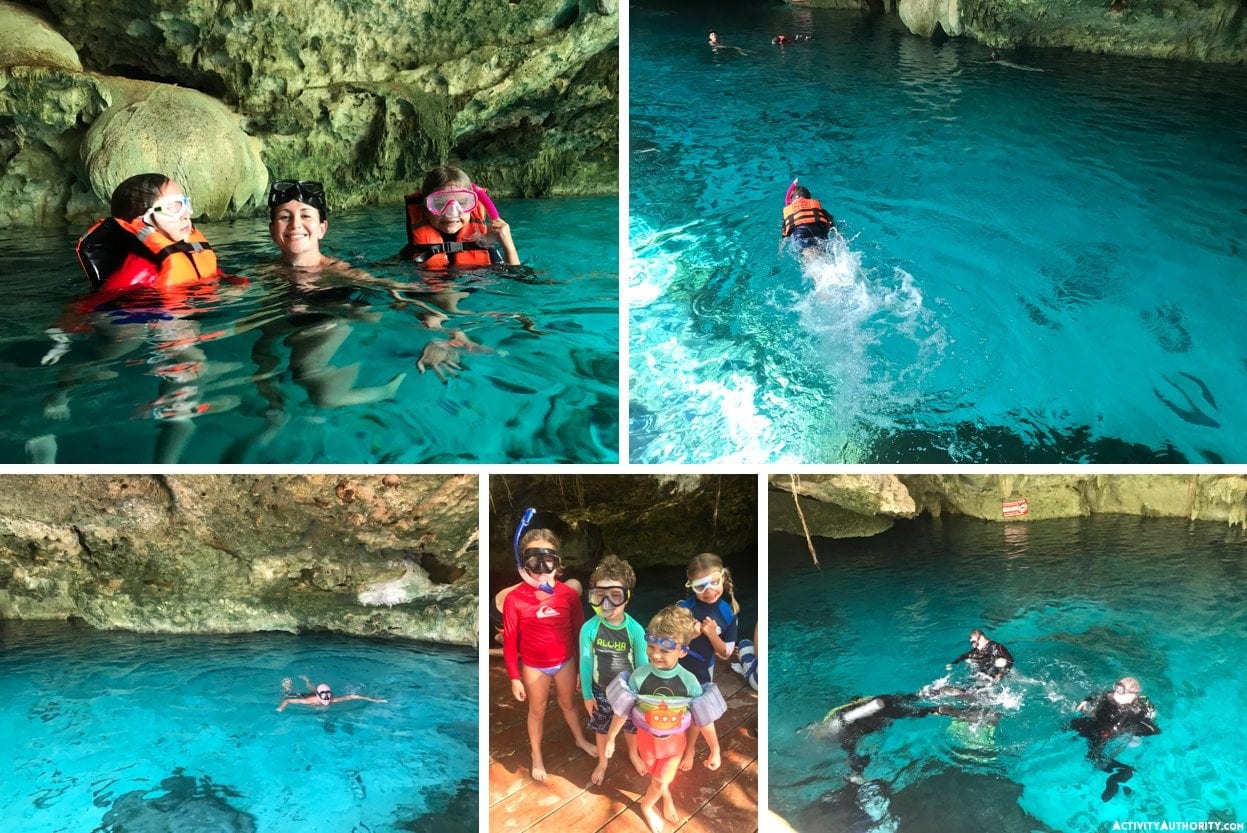
Two of the five longest cave systems in the world are located in Quintana Roo, and the most popular cenote of all – Grand Cenote – gives way to the second longest cave system in the world, Sistema Sac Actun, at 208 miles.
Some of the most popular cenotes include the following:
- Closest to Cancun & Riviera Maya: Tajma Ha
- Closest to Tulum & Chichen Itza: Cenote Azul, Grand Cenote, Dos Ojos, Grutas de Loltun, Ik-Kil, Yokdzonot
- Closest to Playa del Carmen: Cenote Ponderosa, also known as ‘Jardin del Eden’
- Closest to Valladolid: Ek Balam, Suytun, Oxmal, Samula, Zaci
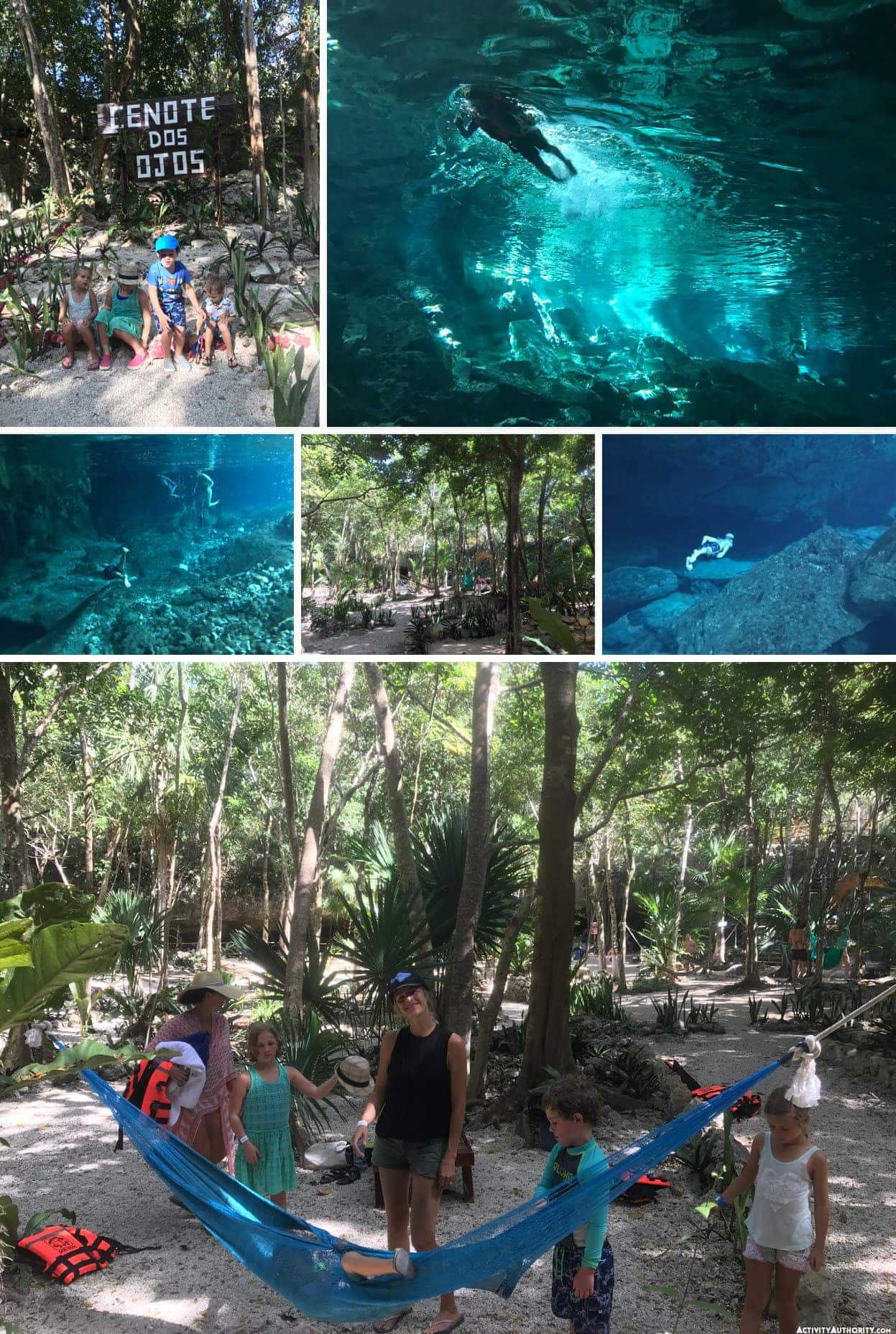
Home to Red Bull’s Cliff Diving Championships, Ik-Kil is obviously an exceptional choice for diving, as is Calavera, while those looking to snorkel should head to Tak Be Ha, and those looking to work on their rope swinging skills should explore Yaxbacaltun. Chihuan offers beautiful underground scenery, while the Miguel Colorado cenote is ideal for getting off the beaten path.
